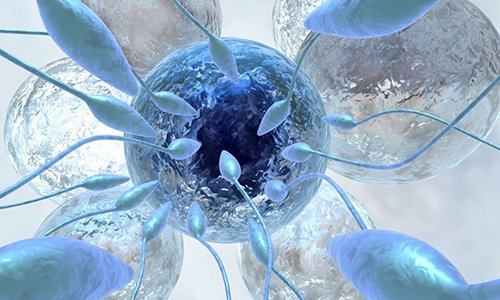How is IVF done?
How is IVF done?
IVF (in Vitro Fertilization) is a common procedure, used to overcome a range of fertility issues. It is a multi-step process involving ovulation induction, egg retrieval, fertilization, culture, and embryo transfer. The IVF process can be explained in these four steps:

Ovulation induction
Fertility medications are prescribed to control the timing of the egg ripening and to increase the chance of collecting multiple eggs during one of the woman’s cycles. These drugs are used to stimulate the growth of several eggs in the ovaries. Normally, only one egg grows per month. However, during the IVF treatment process, several eggs are needed. Because, after the fertilization phase, some eggs will not fertilize or they will not grow naturally. Induction ovulation drugs start from 8 to 14 days before the menstruation and you should see your doctor every two or three days to check the ovulation condition. Depending on the case, normally the ovulation Induction procedure takes 10 to 20 days.
Ovum Pick up:
After the induction ovulation and development of suitable oocytes for fertility, the eggs should be retrieved for in vitro fertilization. Egg retrieval or egg ‘pick up’ is a hospital day procedure where the eggs are collected from your ovaries. An anesthetist will get you ready for a general anesthetic. Your fertility specialist uses the latest ultrasound technology to guide a needle into each ovary and inserts a very thin needle through the upper vaginal wall and removes fluid, which contains eggs, from the follicles of the ovaries. The average number of eggs collected is 8-15. The procedure usually takes less than 30 minutes.
Fertilization and embryo culture:
After the ovum picks up, the embryologist examines the obtained egg to select mature eggs that are suitable for fertilization.
The mature eggs are placed in a culture medium and the sperm transferred to an incubator for fertilization. In IVF, high-motility sperms move to the eggs and fertilize them. Once this occurs, the fertilized eggs are considered embryos.
In condition with the low number and low quality of sperm, the specialist uses intracytoplasmic sperm injection (ICSI). It is as an additional part of an IVF treatment cycle which a single sperm is injected into each egg to assist fertilization. If each egg is fertilized, the resulting cell begins to divide and reaches about 10 cells in 3 days. Finally, the embryo is transferred to the uterus within 2 to 5 days after fertilization.
|
IVF-fertility-treatment |
 ICSI-fertility-treatment ICSI-fertility-treatment |
Embryo Transfer
An embryo transfer is the last part of the in vitro fertilization (IVF) process. Around 2 or 3 days before the embryo transfer, the doctor will choose the best eggs to transfer to the uterus. Sometimes, there are “extra” embryos after an IVF cycle, and most people choose to freeze or cryopreserve their extra embryos. Embryo transfer is a simple procedure that does not require any anesthesia. Embryos are loaded in a soft catheter and are placed in the uterine cavity through the cervix. The procedure is usually painless, but some women experience mild cramping.
- ۰ نظر
- 30 October 19 ، 06:52
- ۲۵۸ نمایش

